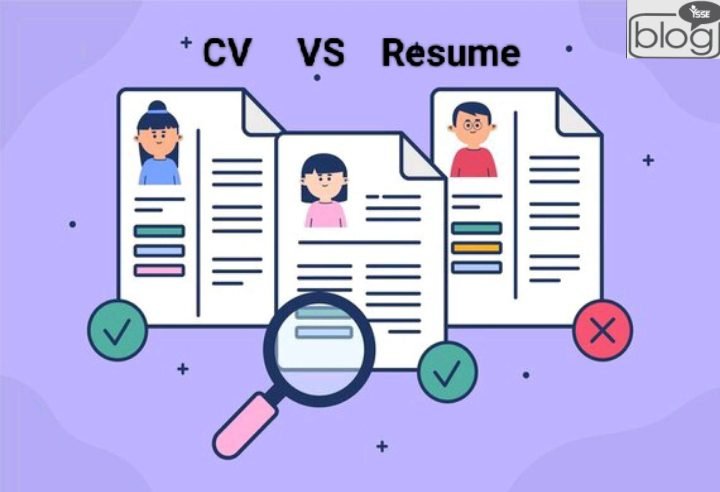Job applicants often use a CV to highlight their academic and professional accomplishments. Although this could sound a lot like a resume, the two documents are not the same. Let me help you out with a quick comparison of a resume and a CV.
What is a CV?
The word “CV” is an acronym for the Latin phrase “Curriculum Vitae” (which means “course of life”). A CV is a document outlining information about one’s career, work experience, academic qualification, skills, etc. Usually, a CV is two to three pages long. There are 3 different types of CV formats :
- Chronological CV
- Functional CV
- Combination CV
What is a Resume?
The word ” resume” comes from the French word “résumé”, which means “abstract” or “summary”. A resume is a document summarizing one’s education, work experience, and skills. Commonly, a resume is usually on one page. There are four different types of resume formats:
- Chronological resume
- Functional resume
- Combination resume
- Targeted resume
CV vs Resume:
A CV emphasizes a more extensive account of one’s academic-related experiences, whereas a resume is typically a brief review of one’s experience in various fields.
A CV is sent when applying for academic positions, usually those in teaching or research. When a candidate is applying for jobs, they use resumes. The CV is that document where one can list all of their academic accomplishments, certifications, and degrees. The focus on professional accomplishments over academic ones is more significant in a resume, which must be customized for each position that one is applying for.
Additionally, an entry-level resume typically has one page, whereas a CV typically has numerous pages.
Now you might be thinking, “Should I use a CV or resume? The Latin phrase “the course of your life” is “Curriculum Vitae,” which is what CV stands for. A CV is essentially a biography of you. The words “CV” and “resume” have similar meanings in certain countries. However, these documents differ greatly in the US. The CV goes above and beyond to highlight experience, education, and other relevant information, as well as honors, publications, awards, accomplishments, and more. The CV is most helpful since these additional areas highlight talents that are most applicable to academic purposes. Also, a CV emphasizes the transferable skills that companies seek and can be demonstrated through endeavors like employment, internships, volunteer work, and extracurricular activities. On the other hand, Fresh graduate students with early careers are typically expected to submit a resume when applying to jobs in industry, nonprofits, and the public sector.
Here’s a list to include when you’re writing a resume:
- Contact information
- Resume summary
- Work experience
- Education
- Skills
- Other relevant information (certifications, awards, projects, volunteer work, language skills, etc)
Here’s a list to include when you’re writing a CV:
- Contact information
- Career Objective
- Academic qualification
- Work experience
- Key skills
- Publications
- Awards and appreciation
- Certification
- Voluntary experience
- Internships
- Co-curricular activities
- Extra-curricular activities
- Memberships
- Training
- CSR activities
- Language skills
- Computer skills
- References
Preparing a CV or resume for the first time can be challenging but with some effort, you will also be able to create a CV or a resume.
To read more blogs, click here.
Writer,
Mehrin Khan
Intern,Content Writing Department
YSSE.


Informative blog..
I must say it is an amazing blog.Learned so many things that I don’t know before.
Informative blog
I must say it is an amazing blog.Learned so many things that I don’t know before.
Overall, this is a top-notch piece of content. It is an informative, well-written, engaging content.I would highly recommend it to anyone seeking quality information on the topic.
The writer has an excellent writing style that makes the content both enjoyable and informative.
Helpful for fresh graduate..so much informative..Thanks for sharing..
A top notch blog. This blog is incredibly well written,informative and engaging with amazing captivating writing style.
One of the most well-organized and informative blog.
Amazing write-ups
Wow, this is such an insightful article and hats off to the author’s writing skill 👏👏
An Amazing blog.A Must read article for the fresh graduate.I would love to see more of your work in the future.
Informative and learned many new things.Thanks to the writer
Such an insightful content with amazing writing style.Keep it up!💜💜
What an amazing and informative blog it was!
A very well written blog. Keep it up!
I have learnt so many new things from this content.This is very helpful content for me.Thanks to the writer for choosing such an amazing topic.